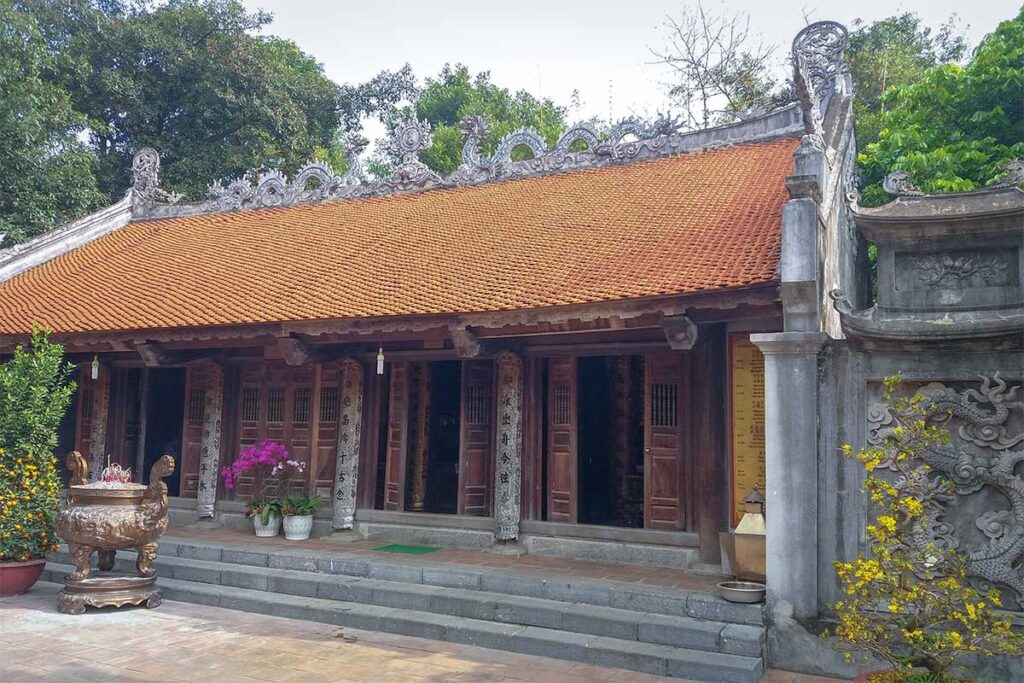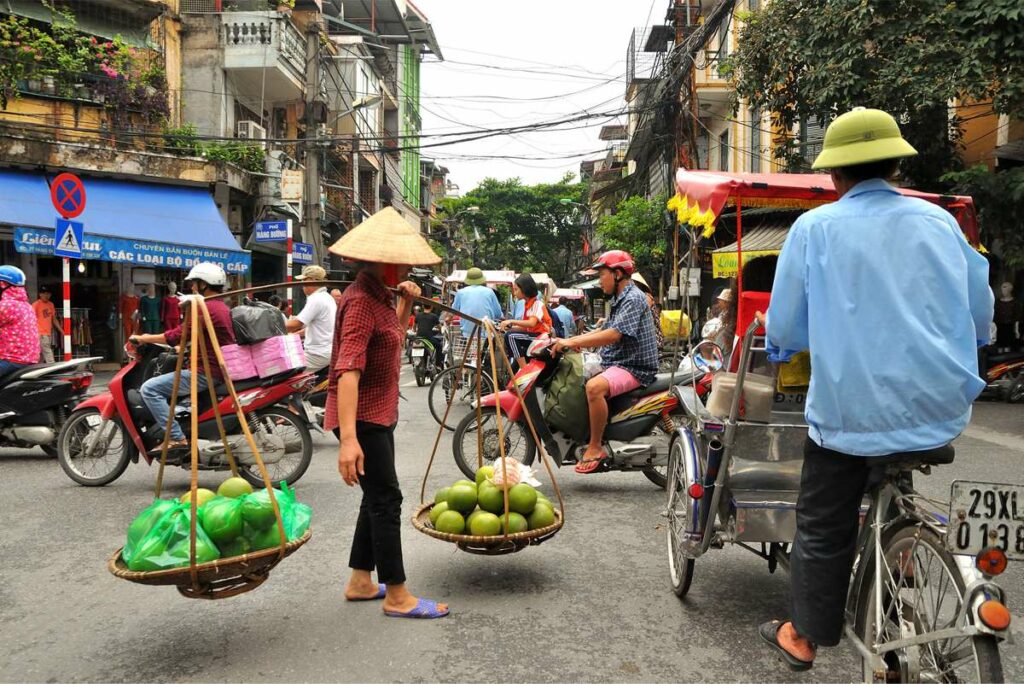Historical and Cultural Background
History of the Temple
Hai Ba Trung Temple in Hanoi was originally built in either 1142 or around 1160, during the reign of King Ly Anh Tong, to honor the legendary Trung Sisters. It was first located along the banks of the Red River but was relocated in 1819 due to severe erosion threatening the original site. The temple has since stood in Dong Nhan Ward, in what is now Hai Ba Trung District.
In recognition of its cultural and historical importance, the temple complex was designated a Special National Relic in 2019. In 2025, it was officially declared a designated tourist site as part of Hanoi’s broader cultural tourism development program.
Who were the Trung Sisters?
Trung Trac and Trung Nhi were sisters who led a major uprising against the Chinese Han Dynasty in 40 AD. Within months, they successfully liberated dozens of territories across ancient Vietnam and ruled independently for three years. Trung Trac was proclaimed queen, establishing her court in Me Linh before the rebellion was ultimately defeated in 43 AD. Rather than surrender, the sisters are said to have ended their lives by jumping into a river—forever remembered for their courage and sacrifice.
➤ Read our full guide to the Trung Sisters
Highlights of visiting Hai Ba Trung Temple
Temple architecture & Layout
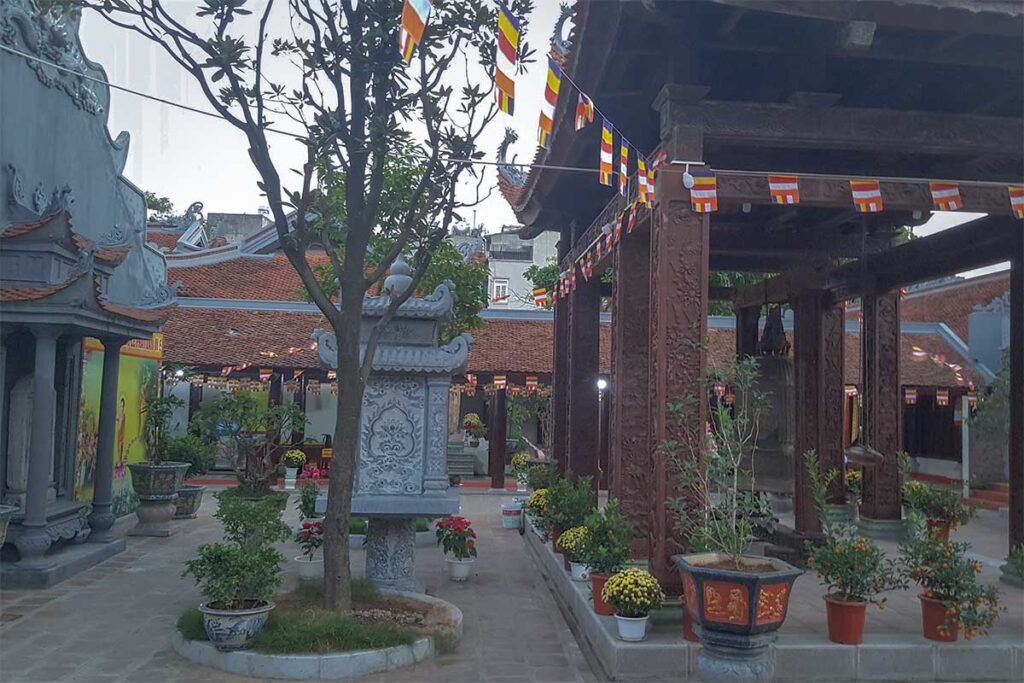
Hai Ba Trung Temple features a spacious and traditional layout, beginning with an outer gate that leads into a large courtyard. Inside, you’ll find a drum tower, bell tower, and the main sanctuary area where the Trung Sisters are worshipped. The architecture blends Buddhist and folk elements, with curved roofs, dragon motifs, and symbolic animal carvings. Despite being located in a busy district, the temple offers a surprisingly peaceful retreat from Hanoi’s urban noise.
Statues and Altars
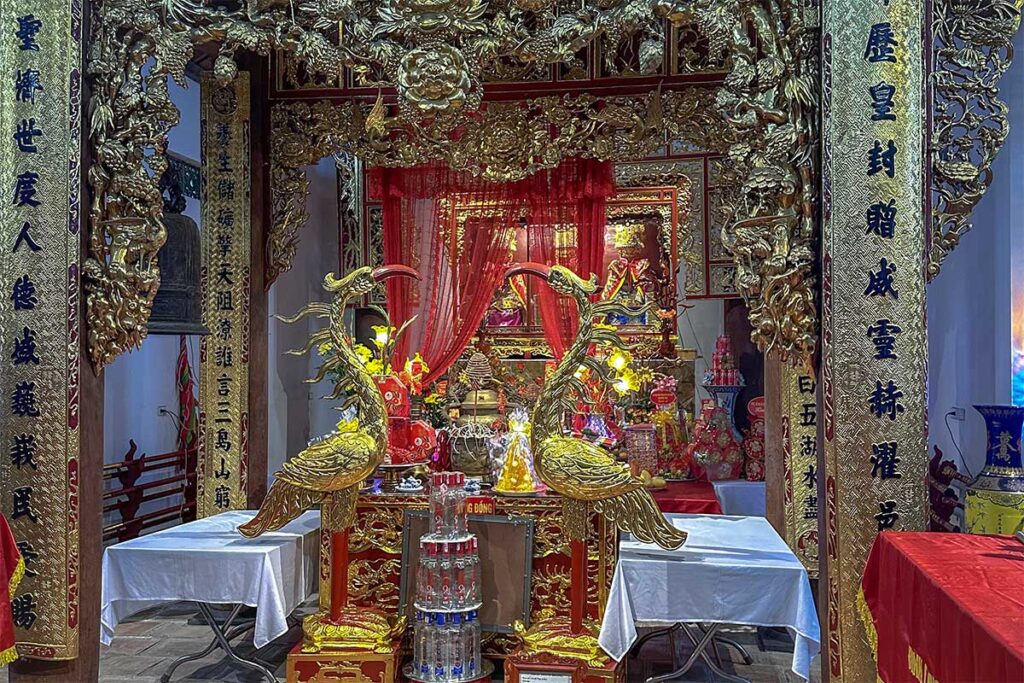
The centerpiece of the temple is the striking statues of the Trung Sisters riding elephants, symbolizing their leadership in battle. Inside the sanctuary, you’ll also find altars to their parents, their generals (both male and female), and other figures from their dynasty. The temple includes incense burners, ceremonial halls, and a harem area used in religious offerings, all of which contribute to the spiritual feel of the complex.
Memorials and Side temples
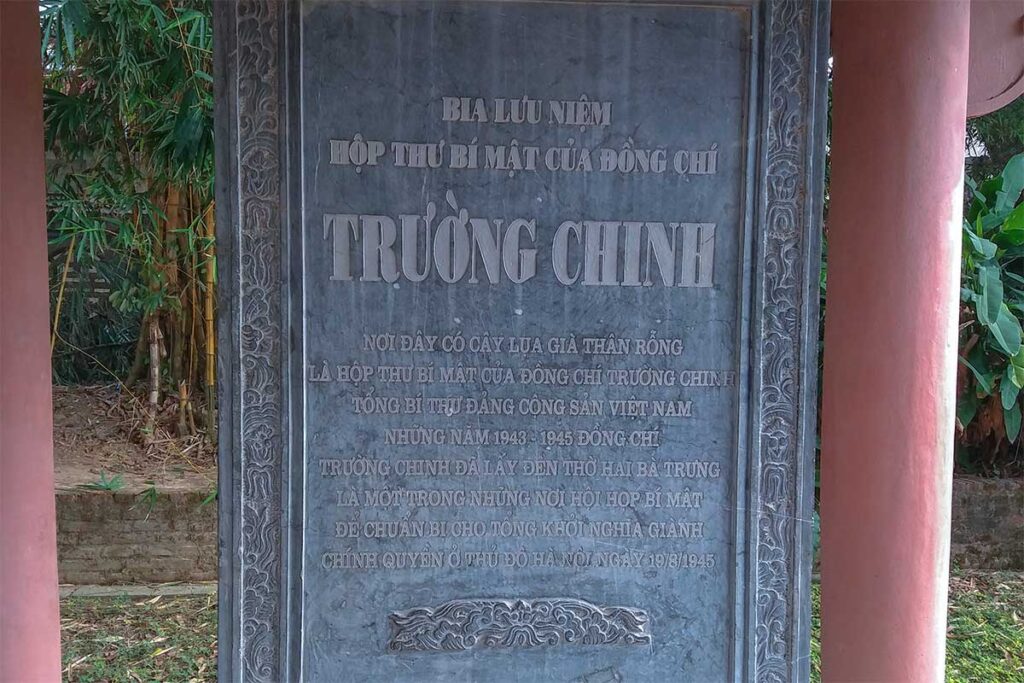
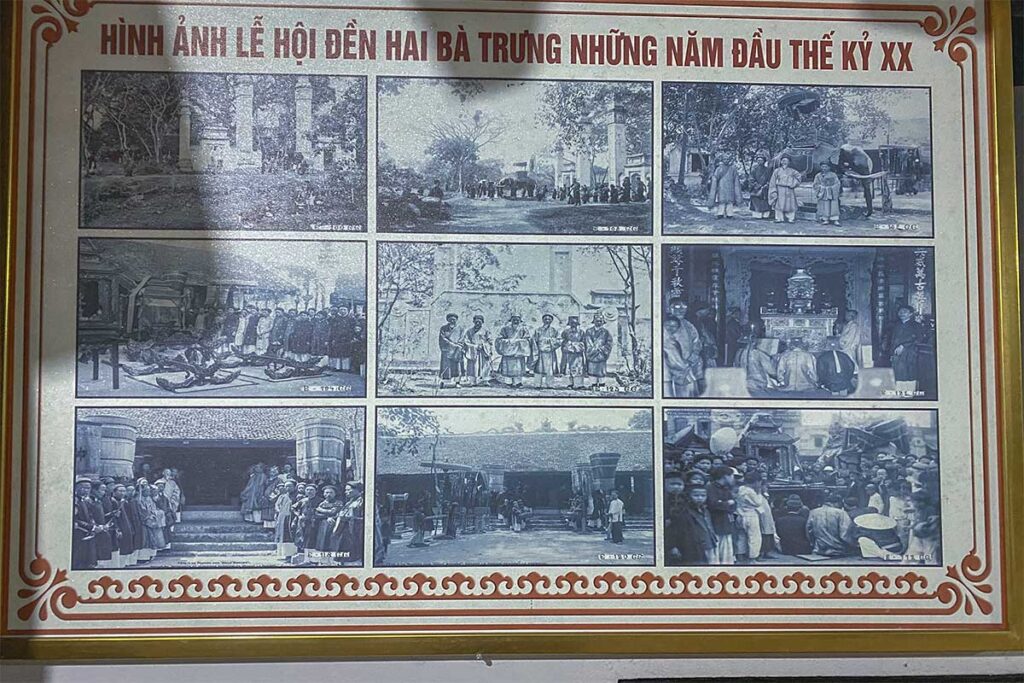
Around the main buildings are several smaller altars and memorial structures, including a stele house, guest house, and tranquil features like lotus lakes, streams, and symbolic “elephant” ponds. One unique detail is a historic mailbox used by Comrade Truong Chinh, preserved as a hidden relic of Vietnam’s revolutionary era. These smaller corners of the temple provide a deeper layer of cultural history beyond the Trung Sisters themselves.
Daily atmosphere
On most days, Hai Ba Trung Temple feels like a quiet neighborhood spot rather than a tourist attraction. Locals visit to pray, rest, or take part in small ceremonies, and the temple grounds are sometimes used as a community gathering space. During non-festival periods, it’s usually peaceful, but there are times when the gates are unexpectedly closed without notice. You may also find local children playing nearby, adding to the feeling of it being a lived-in, low-key cultural site.
Hai Ba Trung Temple Festival
When is the Festival Held?
The Hai Ba Trung Temple Festival takes place every year in late February or early March, based on the lunar calendar — specifically on the 6th day of the second lunar month. Because this date changes each year on the Western calendar, it’s best to check locally or with a guide if you want to attend.
Major celebrations happen at both the Dong Nhan Temple in Hanoi and the Me Linh Temple in the sisters’ birthplace. The event is part of a broader heritage program and was officially recognized as National Intangible Cultural Heritage in 2025.
What to expect during the festival
The festival opens with a grand parade, featuring palanquins, drums, flags, and symbolic elephant statues that represent the Trung Sisters’ military strength. At Dong Nhan Temple, a water procession is held — river water is collected and used to bathe the statues of the sisters, followed by a lamp dance and incense offering led by widowed women, a unique and culturally significant ritual.
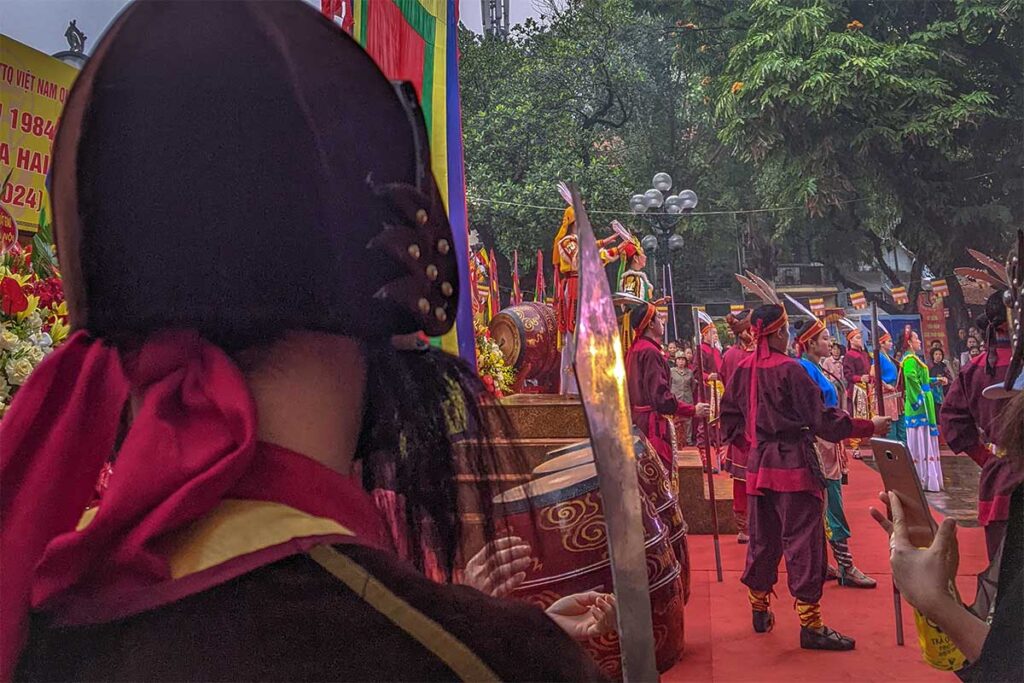
Other highlights include folk games, lion and dragon dances, human chess, and a dramatic re-enactment of the Trung Sisters leading their troops into battle. The festival celebrates both Vietnamese independence and the historical role of women, and it’s one of Hanoi’s most meaningful traditional events.

Visiting information
Opening Times
Hai Ba Trung Temple generally follows standard temple hours, opening from around 8:00 AM to 5:00 PM. However, there is no clear signage for opening times at the site, and visitors have occasionally found it closed without notice. To avoid disappointment, it’s best to visit in the morning on a weekday, when the chance of finding it open is higher.
Entrance Fee
There is no entrance fee to visit the temple. Like most temples in Vietnam, it is open to the public for worship and respectful visits.
Dress Code
The temple doesn’t have a strict dress code, but as with any religious site in Vietnam, modest clothing is expected. You should cover your shoulders and knees when entering the sanctuary. On hot days, bringing a scarf or light sarong to cover up briefly is perfectly acceptable and a practical solution.
Location and How to get there
Hai Ba Trung Temple is located in Dong Nhan Ward, Hai Ba Trung District, about 2.5 to 3 km south of Hanoi’s Old Quarter. The most convenient way to get there is by taxi or Grab (either car or motorbike), which takes around 10 to 15 minutes depending on traffic. While a few public buses run in the area, none stop directly at the entrance, so walking or a short motorbike ride is often still required.
Is Hai Ba Trung Temple worth visiting?
If you’re looking for impressive architecture or detailed storytelling, Hai Ba Trung Temple might not meet your expectations. The complex is modest in scale, and there’s very little signage in English, which can make it underwhelming without prior knowledge or a guide.
That said, if you’re interested in Vietnam’s history of independence, especially the legacy of the Trung Sisters, it can be a meaningful and peaceful stop. It’s not a must-see for every traveler, but those who appreciate quiet cultural sites and national symbolism may find it rewarding — particularly if you’re already nearby.
➤ See more options in our guide to the Best temples in Hanoi
